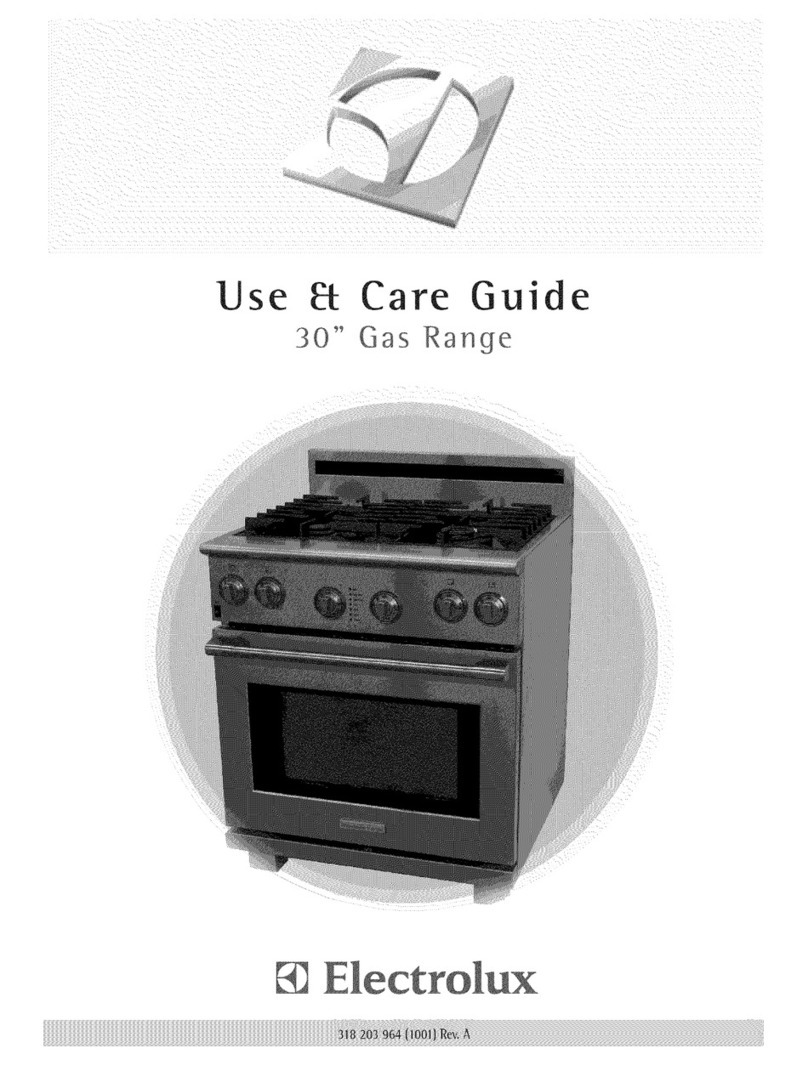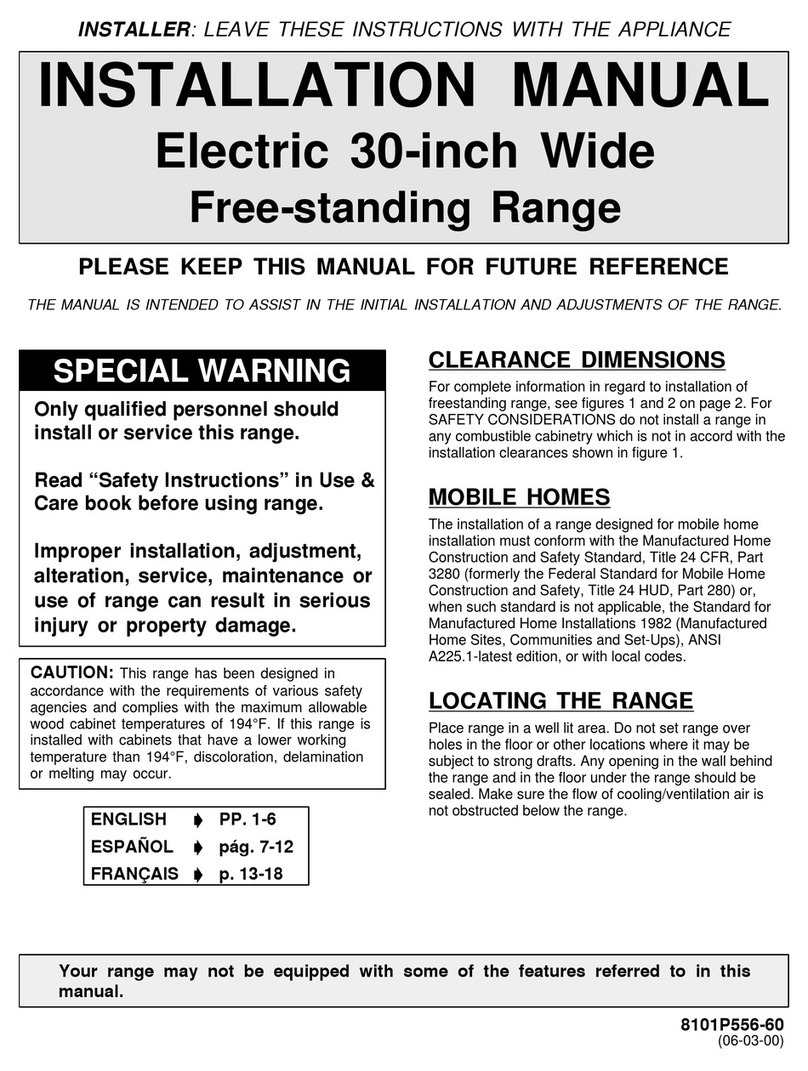IDEAL Concord CXC 48 User guide


2
Concord CXC - Installation
CAUTION.
To avoid the possibility of injury during the installation, servicing or cleaning of
this appliance, care should be taken when handling edges of sheet steel components.

3
Concord CXC - Installation
CONTENTS
Air Supply......................................................................... 9
Boiler Assembly - exploded view. ............................... 10
Boiler Clearances............................................................ 6
Burner Assemblies - exploded views. .............................
CXC 48-70................................................................. 28
CXC 94-116................................................................ 29
Casing Assembly. .......................................................... 13
Commissioning. ............................................................. 18
Condensate Drain Connection ..................................... 12
Controls. ........................................................................... 5
Electrical Connections. ................................................. 15
Electrical Supply. ........................................................... 10
Fault Finding. ................................................................. 33
Flue System. ..................................................................... 9
Gas Connections. .......................................................... 13
Gas Safety Regulations ................................................... 3
Gas Supply...................................................................... 10
Hydraulic Resistance....................................................... 6
Initial Lighting................................................................. 18
Installation. ..................................................................... 10
Mandatory Requirements. ............................................... 9
Option Kits........................................................................ 5
Pump. ................................................................................ 7
Servicing. ........................................................................ 25
Short List of Parts. ......................................................... 36
Static Head Requirements. ............................................. 7
Ventilation. ........................................................................ 9
Water Circulation. ............................................................ 7
Water Connections. ......................................................... 5
Water Treatment. .............................................................. 8
Wiring Diagrams. ........................................................... 16
INTRODUCTION
CONSTRUCTION
BOILER BODY
The Concord CXC boiler consists of 2 basic parts; a conventional
Concord CXD boiler; plus an additional heat exchanger.
The Concord CXC boiler body is constructed from cast iron
sections,insulatedby a foilbackedfibreglass blanket. It ismounted
on a sheet steel combustion chamber.
Analuminiumised mild steel flue collector hood andstainless steel
condensatesumpis fitted on top of this heat exchanger. The sump
supports the secondary heat exchanger which is constructed from
aluminiumfinnedtubesbetweenaluminium and cast iron headers.
This heat exchanger is also insulated by a foil backed fibre glass
blanket.
Above the primary heat exchanger an induced draught fan is fitted
- capable of overcoming the resistance of a 30m length of 6" flue
pipe. The boiler is supplied with header pipework between the
primary and secondary heat exchanger.
Within this pipework, a 'shunt' pump is provided to ensure an
adequate flow through the primary heat exchanger, independently
ofthesystempump.Thisalso ensures that a sufficienttemperature
is maintained in the primary heat exchanger to prevent corrosion.
CASING
The combined boiler bodies are enclosed in a white, stove
enamelled casing which incorporates a control panel fascia.
The casing is specially designed to ensure easy access for both
servicing and cleaning of both heat exchangers.
BURNERS
The 3 burners are of stainless steel construction.
Gas Safety (Installation and Use) Regulations, 1994,
amendments 1996 or rules in force.
It is the law that all gas appliances are installed and serviced by a
CORGI registered installer (identified by ) in accordance with
the above regulations. Failure to install appliances correctly could
lead to prosecution. It is in your own interest, and that of safety, to
ensure that the law is complied with.
The Concord CXC 48/116 range of boilers has been tested and
certified by British Gas to prEN656 for use with
Natural gas only.
Note.
The CXC 48
and CXC 70 boilers are intended for use as
COMMERCIALBOILERSandareNOTcertifiedfor use in domestic
applications. A domestic installation is defined as an installation
where the boiler takes its combustion air from a living space or
from a room directly or indirectly connected with the living space.
It is important, therefore, that no external control devices - e.g.
flue dampers, economisers etc., are directly connected to this
appliance unless covered by these Installation and Servicing
Instructions or otherwise recommended by
Caradon Plumbing
Limited
in writing. If in doubt please enquire.
Anydirectconnectionofacontrol device not approved by
Caradon
Plumbing Limited
could invalidate the British Gas Certification,
the normal appliance warranty and could also infringe the Gas
Safety Regulations. Table 1, Table 2 and the descriptive notes
which follow contain all the essential data likely to be required by
the installer.
Concord CXC 48-116 (Natural gas) B.G. Certified - P.I. No. 87/AQ/340 Destination Countries: GB and IE

4
Concord CXC - Installation
Boiler CXC 48 CXC 70 CXC 94 CXC 116
Number of sections 3 4 5 6
Flow tappings Rc (in. BSP) 2 (2) - 1 at rear
Return tappings Rc (in. BSP) 2 (2) - 1 at rear
Maximum static head metres (feet) 45.7 (150)
Maximum pressure bar (p.s.i.) 4.5 (65)
Gas inlet connection Rc (in. BSP) 3/4 (3/4) 1 (1 )
Minimum dynamic gas mbar
gauge
15.0 15.0 16.2 15.0
pressure required at the boiler inlet in.w.g. 6.0 6.0 6.5 6.0
Electricity supply 230 Volts- single phase, 50 Hz, fuse 5 A
Power Consumption Watts 96 96 96 96
Nominal flue size (to BS. 835) mm (in.) 152 (6) 152 (6) 152 (6) 152 (6)
Diverter outlet socket mm 154 154 154 154
internal diameter in 6 1/16 6 1/16 6 1/16 6 1/16
Length of burner bars (overall) mm 377 497 617 737
in 14.8 19.5 24.3 29.0
Approx. dry weight kg 298 350 442 494
lb 658 771 974 1090
Water contentm litre 28 36 43 51
gal 6.2 8.0 9.5 11.2
Gas type G20 I2H 20 mbar
Boiler CXC 48 CXC 70 CXC 94 CXC 116
Number of sections 3 4 4 5
Boiler output High Rate kW 48.83 69.84 93.65 116.25
Condensing Btu/h x 1000 166 600 238 300 319 500 396 600
Boiler output High Rate kW 44.63 63.84 85.6 106.3
Non-Condensing Btu/h x 1000 152 300 217 800 292 100 362 700
Boiler Input Gross kW 31.5 45.06 60.42 75
Low Rate Btu/h x 1000 107 500 153 700 206 200 255 900
Nett kW 28.4 40.6 54.44 67.58
Btu/h x 1000 96 900 138 500 185 800 230 600
Boiler Input Gross kW 52.5 75.1 100.7 125
Btu/h x 1000 179 100 256 200 343 600 426 500
High Rate Nett kW 47.3 67.67 90.73 112.6
Btu/h x 1000 161 400 230 900 309600 384 200
Gas rate m3/h 4.4 7.0 9.4 11.6
ft3/h 172 247 331 411
Approx. flue gas 8.0%
CO
2& 60°C. m3/sec 0.023 0.033 0.045 0.056
volume (non condensing)
High rate 8.0%
CO
2 & 140°F. ft.3m49 70 95 119
Manifold setting pressure mbar 3.9 3.9 3.8 4.1
Low Rate in.w.g. 1.6 1.6 1.5 1.6
Manifold setting pressure mbar 11.7 11.8 10.7 11.5
High Rate in.w.g. 4.7 4.7 4.3 4.6
Seasonal efficiency (SEDBUK)* [85.8]% [85.5]% [86.2]% [85.7]%
Electricity supply 230V, 50Hz, fuse 5A
Ignition 5 attempts followed by nonvolatile lockout.
Gas valve High/Low and Off
Gas safety time Maximum of 10 secs with 5 attempts with one min. between attempts.
Safety check The control de-energises every 4 hours to check internal control functions.
Pump Pump overrun operates if the flow temperature is greater than 75 oC.
Boiler thermostat The boiler thermostat hysteresis is a maximum of 3 oC.
Table 3 - Boiler Control specification Maximum Flow Temperature 85 oC
Table 2 - General Data
GENERAL
Table 1- Performance Data
Note.
To obtain gas consumption, divide gross heat input (kW) by a calorific value of 37.8 (MJ/m3)
*The value is used in the UK government's Standard Assessment Procedure (SAP) for energy rating of dwellings.
The test data from which it has been calculated have been certified by BGplc 0087.

5
Concord CXC - Installation
Boiler Size Cold Feed Open Vent
CXC 48 -70 3/4"1"
CXC 94 -116 1" 1 1/4"
Sealed system filling point - refer to Frame 8
GENERAL
GAS CONTROLS
The gas controls consist of a high / low arrangement with direct
burner ignition.
ELECTRICAL CONTROLS
WARNING
.
TheON/STANDBY [1/0] button doesNOTelectrically
isolate the boiler.
The Concord CXC range incorporates an advanced
microprocessor based control system which operates all electrical
functions of the boiler including for operation, ignition, flame
detection,thermostaticcontrol,andhigh/lowoperation.Inaddition,
the microprocessor has onboard servicing and commissioning
instructions and a fault diagnosis programme.
TheilluminatedLEDdisplaygivesacontinualread-outoftheboiler
status and functions, but in the (unlikely) event of a fault condition,
will display the fault areas.
Combustion products are drawn through the boiler by a fan and
air flow is proved by a pressure switch.
The burner flame is ignited by a spark generator.
Blockage of the condensate drain is protected against by a float
switch situated in the sump.
OPTION KITS
Pressure Gauge Kit: A pressure gauge is available for the range
of boilers. Details for fitting are included with the pressure gauge.
Remote Indication Board (volt free): This provides the ability
for remote indication of lockout and overheat conditions.
Outside Sensor: This kit provides a sensor for temperature
compensation when the outside temperature changes. Each
boiler needs to be individually switched on therefore a sensor is
required per boiler.
DUTY
The range of boilers is suitable for: Combined indirect pumped
domestic hot water
and
central heating systems; Independent
indirect pumped domestic hot water
or
central heating systems.
Fully pumped systems may be open vented or sealed.
Flow and return connections are 2" BSP.
Safety Valve
A safety valve must be sized and fitted in accordance with BS.
6644 for every type of system. The valve should be set at 0.7
bar (10 lb/in.2) above the operating pressure in the boiler. The
maximum safety valve setting is 0.7 bar (10 lb/in.2) above the
maximum design operating pressure of 4.5 bar (65 lb/in.2).
Cold Feed/Open Vent
The independent cold feed and the open vent must comply
with BS. 6644 and be of the following minimum size.
1
WATER CONNECTIONS
The range of boilers is NOT suitable for:
1. Gravity DHW systems.
2. Gravity heating systems.
3. Direct domestic hot water supply.
SYSTEM DESIGN
The water efficiency of this range of boilers is higher than
conventional boilers, at any water temperature, because of the
increased heat exchanger area.
Atreturntemperaturesof55°Candbelow, the differencesbecome
more marked because the water in the flue gases starts to
condense,releasing its latent heat. In general, the lower the return
temperature (down to its minimum temperature of 35 °C to protect
the primary heat exchanger) the better the boiler efficiency.
In new systems it is best to design for the lowest flow and return
temperaturesthatarepractical(subject to the lower limit mentioned
above). Of course, the lower the mean water temperature the
greater must be the heating surface area.
PERFORMANCE
The efficiency of the Concord CXC range of boilers is related to
the return water temperature of the boiler. This graph shows that,
in order to achieve maximum efficiency at any given load, the
system controls should be used in a manner which maintains the
lowestreturntemperaturecommensurate with systemperformance
Graph 1 - Boiler efficiency

6
Concord CXC - Installation
GENERAL
Rear clearance: sufficient clearance should be given
at the rear of the boiler for connection of gas and
water pipework.
*Additional clearance is required for access at either
end of the installation.
POSITION OF BOILER
Minimum clearances required
from walls or other fixed
objects to allow for the free
access of combustion air are
shown in Table 4 above.
However, for maintenance
purposes we suggest a
minimum rear clearance of
200mm.
Any combustible material
adjacent to the boiler and its
flue system must be so placed
or shielded as to ensure that
its temperature does not
exceed 65 oC (150 oF).
MULTIPLE BOILER INSTALLATIONS
The minimum installation clearances must conform to the
dimensions given below:
CXC 48 & 70
Clearance between boilers = 50mm
Clearance at both ends of the multiple installation = 50mm*
CXC 94 & 116
Clearance between boilers = 100mm
Clearance at both ends of the multiple installation = 100mm*
2
CLEARANCES & DIMENSIONS
Boiler Size CXC 48 CXC 70 CXC 94 CXC 116
Front clearance mm (in) 750 (29 1/2)
Rear clearance mm (in) 200 (8) see text
Side clearance mm (in) 50 (2) 50 (2) 50 (2) 100 (4)
Dimension Amm (in) 723(281/2) 846(33 5/16) 969(38 1/8) 1092(43)
Table 4
Graph 2 - Heat Load/ Water Volume Graph 3 - Hydraulic Resistance

7
Concord CXC - Installation
GENERAL
3
OPEN VENTED SYSTEMS - Minimum static head requirements
Note A.
This minimum height must be increased, if necessary, to
comply with the minimum head required by the pump
manufacturer in order to avoid cavitation.
Note B.
This diagram does not show safety valves, water flow
switches, etc., necessary for the safe operation of the
system.
Table 5 - Flow rates for fully pumped systems
Boiler Minimum flow rates for a
temperature difference of 35 oC (63 oF)
l/s g.p.m.
CXC 48 0.33 4.4
CXC 70 0.48 5.3
CXC 94 0.64 8.5
CXC 116 0.79 10.4
Particular reference should be made to BS. 6644: Section 2;
Subsection 10 and Guidance note PM5 "Automatically controlled
steam and hot water boilers" published by the Health and Safety
Executive.
The information and guidance given below is not intended to override
any requirements of either of the above publications or the
requirements of the local authority, gas or water undertakings.
Other British Standards applicable are BS.5422 and BS.6700.
The information provided is based on the following assumptions:
1. An independent open vent/safety pipe connection is made to the
redundant boiler flow tapping or is positioned immediately after
the system flow pipe connection to the header, as shown (C).
2. An independent cold feed/expansion pipe connection is made to
theredundantboilerreturntapping("D"). Cold feed/expansion pipe
connections made to the pumped system return will result in an
increase in the static head requirement, caused by the additional
resistance of the distributor tube. Surging may also increase.
3. The maximum flow rate through the boiler is based on a
temperature difference of 11°C at full boiler output and the
circulating pump is positioned in the flow to the system.
4. The boiler is at the highest point of circulation in the system.
Systems designed to rise above the boiler flow tappings will
automatically require a minimum static head higher than that
shown.
5. The position of the open vent/safety pipe above the expansion
cistern water level is given as a guide only ("B"). The final position
will depend upon the particular characteristics of the system.
Pumpingoverofwaterintotheexpansioncisternmustbeavoided.
and cost. Graph 1 is based on a 20°C temperature difference
across the boiler.
WATER CIRCULATION SYSTEM
Due to the compact nature of the boiler the heat stored within the
castings at the point of shutdown of the burner must be dissipated
into the water circuit in order to avoid the overheat thermostat
tripping. In order to allow pump operation after burner shutdown
the boiler control box incorporates a pump overrun facility which
operateswhentheboiler switches offanduntiltheflow temperature
is below 75 0C and, in order to make use of this, the pump must be
wired to the appropriate terminal L2(pump) in the boiler control
box.
1. The minimum flow rate as given in Table 5 must be maintained
whenevertheboiler isfiringandduring the pumpoverrunperiod.
2. Duringtheperiodof pump overrun there mustbeanopencircuit
of adequate water volume and/or load. The minimum size of
this circuit is given by the use of Graph 2.
Examples shown on Graph 2
a. For the CXC 116 the minimum circuit during pump overrun
could be a load of 6 kW with a volume of 31 litres or any
other combination given by the relevant line.
b. For the CXC 94 the minimum circuit during pump overrun
could be a load of 2 kW with a volume of 45 litres or any
other combination given by the relevant line.
The above circuit capacity during pump overrun may be
achieved either by provision of an adequate bypass circuit
or by ensuring that a zone of suitable size is open for
circulation during this period by relevant control of zone
valves or pumps.
The wiring diagrams in Frames 16, 17 and 18 illustrate
the control methods for achieving the above.
3. Pump selection should take account of the hydraulic
resistance given in Graph 3.
PUMP POSITIONS
Whenever practically possible the circulating pump(s) should be
positioned so that it pressurises the system being served. The
vertical distance between the pump(s) and any cold feed and
expansion cistern MUST comply with the pump manufacturers
requirements in order to avoid cavitation. These requirements
overridetheinformationgiveninFrame3ifthestaticheadrequired
for the pump(s) exceeds that required for the boiler.

8Concord CXC - Installation
4
SEALED (PRESSURISED) SYSTEMS automatic reset. In the event of shut down both visual and
audible alarms may be necessary.
Pressure vessels used must comply with BS. 4814 and must
be sized on the basis of the total system volume and initial
charge pressure.
Initial minimum charge pressure should not be less than 0.5
bar (7.2 psi) and must take account of static head and
specification of the pressurising equipment. The maximum
water temperatures permissible at the point of minimum
pressure in the system is specified in Guidance Note PM5.
When make up water is not provided automatically it will be
necessary to fit controls which shut down the plant in the event
of the maximum system pressure approaching to within 0.35
bar (5 psi) of safety valve setting.
Other British Standards applicable to commercial sealed
systems are:- BS. 6880: Part 2.
BS. 1212
BS. 6281: Part 1
BS. 6282: Part 1
BS. 6283: Part 4
GENERAL
the cold feed pipe that system water expands into the tank when
the boiler passes heat into the system. Conversely, when the
system cools, water previously expelled is drawn back from the
tank into the system, together with a quantity of dissolved oxygen.
Even if leakage from the heating and hot water system is
eliminated there will be evaporation losses from the surface of
the tank which, depending upon ambient temperature, may be
high enough to evaporate a large portion of the system water
capacity over a full heating season.
There will always be corrosion within a heating or hot water system
to a greater or lesser degree, irrespective of water characteristics,
unless the initial fill water from the mains is treated. Even the
water in closed systems will promote corrosion unless treated.
Aluminium Heat Exchanger
The secondary heat exchanger of the Concord CXC is made of
aluminium finned tube and so any water treatment must be
suitable for systems containing aluminium.
Under no circumstances should the boiler be fired before
the system has been thoroughly flushed.
Caradon Plumbing Limited recommend only the use of Fernox
or Betz Dearborn water treatment products, which must be used
in accordance with the manufacturers instructions. For further
information contact :-
Fernox Manufacturing. Co. Ltd, Tandem House, Marlowe Way,
Croydon, Surrey CRO 4XS, Tel 0870 5601 5000 or
Betz Dearborn Ltd, Widnes, Cheshire, Tel. 0151 424 5351
IMPORTANT: Any other treatment for this product will render
the guarantee of Caradon Plumbing Limited INVALID.
Notes.
1. If an inhibitor is used, and in hard water areas where treatment
to prevent lime deposits is necessary, it is most important that
the water treatment MUST be maintained at the correct
concentrations recommended by the treatment manufacturer.
Persons responsible for the continued operation of this boiler
should be made aware of this requirement.
If the boiler is installed in an existing system then any unsuitable
water additives MUST be thoroughly drained.
MINIMUM FLOW OF WATER - Refer to Table 5
The system design must provide for an adequate flow rate through
the boiler at all times when the boiler is firing. The minimum flow
rate should correspond to a temperature difference across the
boiler flow and return of 35 0C (63 0F), assessed at catalogue
rating.
It is essential that the main pump and shunt pump both overrun
to dissipate the residual heat in the primary heat exchanger. This
is done automatically if:
a. An unswitched live supply is connected to the boiler control
box (for details see 'Electrical Connections').
b. The shunt pump (prewired) and main pump are connected to
the boiler control box (for details see 'Electrical Connections').
c. Part of the system is available to the main pump when the
call for heat by external controls is satisfied.
The boiler produces condensate when the system return water
temperature falls below 55 °C (the Dew Point of the combustion
products).
This condensate must be led away by a condensate drain
connected to the steel pipe at the rear of the boiler and installed
in accordance with IM22 (see 'Condensate Drain').
WATER TREATMENT FOR HOT WATER AND
HEATING BOILERS
There is a basic need to treat the water contained in all heating and
indirect water systems, particularly open vented systems. It is
assumed, incorrectly, that because boilers are operating in
conjunction with what is apparently a closed circuit an open vented
system will not, under normal circumstances, allow damage or loss
of efficiency due to hardness salts and corrosion once the initial
charge of water has been heated up a few times.
1mm of lime reduces the heat transfer from metal to water by 10%.
In practice the deposition of these salts is liable to cause noises
from the boiler body or even premature boiler failure. Corrosion and
the formation of black iron oxide sludge will ultimately result in
premature radiator failure.
Open vented systems are not completely sealed from the atmosphere
if proper venting and expansion of system water is to be achieved.
The same tank is used to fill the system with water and it is through
Working pressure 4.5 bar maximum.
Particular reference should be made to BS. 6644: Section 6
and Guidance note PM5 "Automatically controlled steam and
hot water boilers" published by the Health and Safety Executive.
The information and guidance given below is not intended to
override any requirements of either of the above publications or
the requirements of the local authority, gas or water undertakings.
In general, commercial closed pressurised systems are provided
with either manual or automatic water make up.
On both instances it will be necessary to fit automatic controls
intended to protect the boiler, circulating system and ancillary
equipment by shutting down the boiler plant if a potentially
hazardous situation should arise.
Examples of such situations are low water level and operating
pressure or excessive pressure within the system. Depending
on circumstances, controls will need to be either manual or
138423-7.pmd 11/7/2005, 9:48 AM8

9
Concord CXC - Installation
GENERAL
capacity to support the weight of the boiler (when filled with water)
and any ancillary equipment.
If the boiler is mounted on a plinth then the dimensions must exceed
the plan area of the boiler by at least 75mm on each side.
VENTILATION
Safe, efficient and trouble-free operation of conventionally flued
gas boilers is vitally dependent on the provision of an adequate
supply of fresh air to the room in which the appliance is installed.
Ventilation by grilles communicating directly with the outside air is
required at both high and low levels. The minimum free areas of
these grilles must be according to the scale in Table 6.
Position ventilation grilles to avoid the risk of accidental obstruction
by blockage or flooding. If further guidance on ventilation is required
then consult BS.6644.
AIR SUPPLY BY MECHANICAL VENTILATION
The supply of air by mechanical means to a space housing the
boiler should be by mechanical inlet with natural or mechanical
extraction. Mechanical extract ventilation with natural inlet must
not be used.
Where a mechanical inlet and a mechanical extract system is
applied, the design ventilation flow rates should be as in Table 4 of
BS.6644.
The requirements for air supply by mechanical ventilation are given
in BS.6644.
Note. For mechanical ventilation systems an automatic control
should be provided to cause safety shutdown or lockout of the
boiler(s) in the event of failure of air flow in either inlet or extract
fans.
IMPORTANT. The use of an extractor fan in the same room as the
boiler (or in an adjacent, communicating room) can, in certain
conditions, adversely affect the safe operation of the boiler. Where
such a fan is already fitted (or if it is intended to fit an extractor fan
after installation of the appliance) the advice of the gas supplier
should be obtained.
FLUE SYSTEM DESIGN
The Concord CXC condensing boiler is supplied with an integral
fan which is fully matched to the boiler in each case to provide
correct combustion air flow.
The power of this fan is such that there is a large reserve of pressure
available to overcome a significant length of the flue without
affecting the combustion performance of the boiler. The pressure
available at the base of the flue to overcome flue resistance is
0.25 mbar (0.1 w.g.) This is sufficient to overcome the resistance
of approximately 30 metres of 150mm diameter smooth, straight
flue pipe.
Material
The type of flue pipe used should conform BS.715: Section 2
Stainless Steel or be of equivalent corrosion resistance. Advice
regarding the availability of proprietary types of flue system can
be obtained by contacting Caradon Plumbing Ltd. All joints or
connections in the flue system must be impervious to condensate
leakage and also any low points in the flue system should be
drained using pipe of material resistant to condensate corrosion.
Care should also be taken in the selection of flue terminals as
these tend to accentuate the formation of a plume.
Care should be taken to ensure the specification of the chimney is
suitable for the application by reference to the manufacturers
literature. Caradon Plumbing Ltd can offer advice on the design
of suitable chimney systems.
INSTALLATION REQUIREMENTS
The appliance must be installed by a CORGI registered installer,
identified by . The installation of the boiler must be in accordance
with the relevant requirements of the Gas Safety Regulations, current
IEE (BS.7671) Regulations, Model Water Bye-laws, local water
authority bye-laws and it should also comply with any relevant
requirements of the local gas supplier, local authority and the relevant
British Standard Codes of practice and building regulations.
Limitations of Intended Operating Environment
These appliances are NOT suitable for installation where they will
be exposed to the elements.
A boiler room shall be constructed or adapted to meet the
requirements of BS. 6644.
The maximum ambient temperature is 32° C at 1.5 metres from
the floor, with a maximum humidity of 90% RH.
FOR SMALL PIPE INSTALLATIONS:
BS. 6891: Installation of low pressure pipework
FOR LARGE PIPE INSTALLATIONS
Gas Installations
IGE-UP-1: Purging Procedures of Non-domestic Gas
Installations. Soundness Testing Procedures
for Industrial and Commercial.
IGE-UP-2: Guidance notes on the Installation of Gas
Pipework, Boosters and Compressors in
Customer’s Premises Equal to or Greater
than 25mm (Non-domestic).
IGE-UP-10: Installation of Gas Appliances in Industrial and
Commercial Premises.
BS.6644: Installation of Gas Fired Hot Water Boilers
70kW to 1.8MW (net).
BS 6880 Pt 1-3: Control Heating by Low Pressure Hot Water.
CP342:2: Centralised Hot Water Supply.
Model Water Bye-laws
Manufacturers notes must not be taken, in any way, as
overriding statutory obligations.
The appliance must be installed in a room separated from living
rooms and provided with appropriate ventilation direct to the outside
- see Table 6.
2. Artificially softened water must not be used in the system, under
any circumstances.
3. In all systems the fitting of a filter to the return pipework, in order
to prevent debris reaching the heat exchanger, is essential.
FOUNDATION
The boiler must stand on a non-combustible floor (i.e. concrete
or brick) which must be flat, level and of a suitable load bearing
Table 6 - Ventilation Requirements
Required area (cm2) per kW of total rated input (net)
Boiler room Enclosure
Low level (inlet) 4 10
High level (outlet) 2 5
Note: Where a boiler installation is to operate in summer
months (e.g. DHW) additional ventilation requirements
are stated, if operating for more than 50% of time (refer
to BS6644).
138423-7.pmd 11/7/2005, 9:48 AM9

10
Concord CXC - Installation
CONDENSATE DRAIN
The Concord CXC boiler will produce condensate whenever the
temperature of the return water from the system is below
approximately 55 oC(theDewPoint of the combustion products).
Natural gas condensate is mildly acidic with a pH value of about
4 and therefore corrosion resistant materials must be used in the
construction of the condensate drain. Standard PVC pipe is
suitable for this purpose and should be connected to the steel
drain fitted on the boiler.
GAS SUPPLY
If there is any doubt regarding the capacity of the gas meter, the
available gas pressure, the adequacy of existing service pipes
or the size required for new service pipes then the advice of the
gas supplier should be requested. Installation pipework should
INSTALLATION
INSTALLATION
be fitted and tested for gas soundness in accordance with BS.
6891 for small installations or IGE-UP-1 and IGE-UP-2 for large
installations.
Thelocalgassupplier must be consultedifitisnecessary to employ
a gas pressure booster.
ELECTRICAL SUPPLY
WARNING.
This appliance must be efficiently earthed.
A 230 V ~ 50 Hz mains supply is required, fused at 5 amps.
Wiring external to the appliance MUST be in accordance with the
I.E.E. (BS. 7671) Wiring Regulations and any local regulations
which apply.
For details of connections see Frame 14.
5
CONCORD CXC BOILER ASSEMBLY - Exploded view
6. Float switch
7. Shunt pump.
8. End section.
Legend
1. Collector hood
2. Cleanout cover
3. Fan
4. Secondary heat exchanger
5. Air pressure switch.
9. Middle section.
10.Tie rods.
11. Base plate.
12.Combustion chamber.
13.Section bolt.
14.Front plate.
15.NOx duct.
16.Drain cock.
17.Burner manifold assy.
18.Gas cock.
19.Flueway baffles.
20.Thermostat pocket.

11
Concord CXC - Installation
1. Remove the jacket carton and outer packaging frame.
2. Remove the jacket pack support frame.
3. Remove the controls package and installation pack.
4. Remove the 2" BSP steel handling bars from installation
pack.
5. Remove 4 base bolts holding the assembly to the
packaging base.
6. Remove the wood screws securing the front cross
member on the packaging base.
7. Remove the gas cock by unscrewing the union and screw
in the handling bars into the 2 front tappings. Protect the
exposed inlet gas union from ingress of dirt.
8. Knock out front spacing blocks from the packaging base,
ensuring that the boiler assembly is supported, using 2"
BSP handling bars.
9. Using the handling bars, manoeuvre boiler forwards on the
packaging base and slide over the collapsing base on to
the floor.
Note.
Before manoeuvring the boiler into its final position see
Frame
8.
INSTALLATION
INSTALLATION
6
PACKAGING
The Concord CXC boiler is despatched from the factory fully
assembled except for the casing, controls and installation
packs which are packed separately within the same wooden
crate as the boiler.
JACKET PACK contains
!Lower front panel ................. 1 off
!Upper front panel ................ 1 off.
!Lower LH side panel ........... 1 off.
!Lower RH side panel........... 1 off.
!Upper LH side panel ........... 1 off.
!Upper RH side panel........... 1 off.
!Lower top panel .................. 1 off.
!Upper top panel .................. 1 off.
!Infill panel............................ 1 off.
!Support bracket................... 2 off.
!Flue brush ........................... 1 off.
!Jacket hardware pack ......... 1 off.
!Lower rear panel ................. 1 off.
!Upper rear panel ................. 1 off.
!Upper middle rear panel ..... 1 off.
!Lower middle rear panel ..... 1 off.
CONTROLS PACK contains
!Controls box complete ....... 1 off
!Controls installation pack ... 1 off
INSTALLATION PACK contains
!R2 sq. hd. plug .................................... 3 off.
!R2 installation pipe.............................. 2 off.
!Installation & Servicing Instructions .... 1 off.
!Users instructions ............................... 1 off.
!System warning label ......................... 2 off.
7
PACKAGING AND BOILER REMOVAL

12
Concord CXC - Installation
Manoeuvring the boiler
1. Remove the gas cock to access the LHS tapping.
2. Screw the 2 handling bars (2" pipe supplied) into the 2
top tappings.
3. Screw in 2 bars (not supplied), 1 into the LH rear top
tapping and the second into the tee at the RH top
tapping.
4. Use these bars to manoeuvre the boiler into position.
5. Complete the system connections, using suitable
jointing compound, as follows:
a. The flow connection must be made to the upper
tapping on the primary heat exchanger.
10
FLUE CONNECTION
The 150mm (6") flue should conform to BS.715: Section 2
Stainless Steel or be of equivalent corrosion resistance.
The flue must be designed to have no greater resistance
than that of 30m of straight, smooth 150mm (6") pipe.
All joints must be impervious to condensate leakage.
The condensate drain must be 1 1/4" diameter PVC pipe
from the pre-fitted drain at the rear of the boiler.
The condensate drain may be led directly into the normal
drainage system. The pipe should be installed with an
adequate slope (e.g. 1 in 50) and consideration should be
given to frost protection.
The drain should be in accordance with IM 22.
Connections to BS.5355 can be used directly, or
connections to BS.5354 may be used with a suitable
adaptor.
Note.
A condensate trap is built into the boiler sump therefore an
external trap is not necessary.
b. The return connection must be made to the upper
tapping on the secondary heat exchanger.
c. Complete the water connections by plugging the 2
front top and 1 rear top tappings with the 2" BSP
plugs provided. The remaining 1" lower tapping
should be plugged if not used for cold feed on an
open vent system or connection of a pressure
vessel, if on a sealed system.
3. Position the overheat thermostat phial into the LH side
thermostat pocket.
The illustration shows the rear of the boiler with the
flow and relative overheat thermostat position.
Ensure that the overheat thermostat phial is correctly
secured in the pocket. Refer to Frame 13.
8
BOILER ASSEMBLY AND SYSTEM CONNECTIONS
INSTALLATION
INSTALLATION
9
CONDENSATE DRAIN CONNECTION

13
Concord CXC - Installation
11
GAS CONNECTION
1. Refit the gas cock.
2. Connect the gas supply to the gas pipe elbow.
The gas pipe should enter the boiler at the top LH side of
the boiler.
3. Table 2 gives details of the inlet connection size and the
minimum working pressures.
5. Fit clips to the top of each side panel.
6. Fit the spire clips to the side casing panels.
7. Hook on the control box to side panels.
8. Screw in self tapping screws at the bottom of the
control box to fix it to the side panels.
Push in the mains plug into the socket at the back
of the control box.
Unpack the control box from its carton and find the mains plug
strapped to the back of the box.
The boiler casing should now be fitted.
The jacket hardware pack contains all the screws required for assembly.
1. Fit support angles to the
collector hood and sump. The
angle with the hole for the
earth screw fits to the front.
Ensuretherear support angle
is fitted as shown.
2. Wire up the mains input cable
to the plug provided.
Runthiscablealongthelower
clips (using the cable ties in the hardware pack) of the LH side panel with
the plug placed at the front.
3. Slide bottom of lower side panels on to studs on base tray.
4. Screw lower side panel to support angles.
Repeat for other side.
INSTALLATION
INSTALLATION
12
CASING ASSEMBLY

14
Concord CXC - Installation
10.Ensure that the Heyco bush is correctly located
and that the top of the bush is at the marked line.
Route the cables from the temperature probe, air
pressure switch and float switch through the clips
on the RH side panel.
Neatly coil up any excess length of cable and
push in the plug-in connector into the connection
box.
11. Hook the upper side panel into the keyhole slot.
12.Fix the upper side panel in position.
One screw into the lower side panel, one screw
into the upper support angle.
Repeat for the other side.
13.Clip in the upper top panel.
Fit the infill panel around the flue and secure
underneath top panel with the 2 self tapping
screws provided.
14.Fit earth leads as
shown.
9. Route the overheat thermostat capillary through the cable clips as
shown.
Ensure the phial is correctly seated in the correct pocket opposite
side to the flow connection - refer to Frame 8.
Secure with the split pin provided.
Complete the following after reaching Frame 32
15.Fit the lower top panel.
Fit the lower front panel.
16.The upper front panel has 2 hooks at the bottom.
Drop in these 2 hooks behind the back edge of the
lower top panel, push home onto the 4 catches and
secure with the top screw.
17.Fit rear panels in the sequence shown. Do NOT
tighten the screws until all panels are fitted.
Fit No.1 panel with the top 2 screws only.
Fit No.2 panel with the bottom 2 screws only.
Fit No.3 panel with the 4 screws engaging panels 1 and 2.
Fit No.4 panel with the 4 screws.
Align all panels and tighten all screws.
13
CASING ASSEMBLY - continued
INSTALLATION
INSTALLATION

15
Concord CXC - Installation
14
ELECTRICAL CONNECTIONS
WARNING.
This boiler must be efficiently earthed.
The internal wiring of the boiler control box is shown in Frame
15.
Connection must be made in a way that allows complete
isolationof the electrical supply - such as adoublepole switch,
having a 3mm (1/8") contact separation in both poles, or a
plug and socket serving only the boiler and system controls.
The means of isolation must be accessible to the user after
installation.
This should serve only the boiler, together with its controls and
pumps. The supply must be wired direct to the boiler control
box and must not be interrupted by any system controls. The
pump(s) and any system controls must be wired back to the
boiler control box.
The control box incorporates a pump overrun device which is
necessary to dissipate residual heat after plant shutdown. It is
essential that the main pump is wired to the pump terminals
marked L2, N on the plug-in mains voltage connector shown
below and in Frame 15.
If no external controls are fitted it is essential that a link is
wired in place of one on the "Fan/pump plug-in connector".
The flow switch should be connected via volt-free contacts to
the 'Flow S' terminals. A link may be fitted in place of the flow
switch but the control will not be able to analyse the faulty flow
switch, if such a failure should occur. Either of the above must
be fitted or the boiler will not operate.
Anysystemcontrols should beconnected,viavolt free contacts,
totheterminalsmarked'EXTC'.Do NOT connect an external
clock to these contacts or any mains voltage. If no external
controls are fitted a link must be fitted across EXT C.
The boiler provides frost protection via the boiler sensor. If an
external frost thermostat is required contact Caradon
Plumbing Limited.
Wiring should be PVC insulated cable, not less than 0.75mm2
(24/0.2mm). All fuses must be ASTA approved to BS. 1362.
The length of the conductors between the cord anchorage
and the terminals must be such that the current conductors
become taut before the earthing conductor, if the cable or
cord slips out of the cord anchorage.
BOILER CONNECTIONS
Ensure the boiler is ELECTRICALLY ISOLATED.
The live supply cable should be fitted before assembly of the
jacket - see Frame 12 for details.
All wiring between entry at the rear of the boiler and the
connection box must be secured neatly under the cable
clips provided.
Wiring must never be allowed to come into contact with
any heated surfaces.
1. Checkthatthe mains plug is pushed firmly into its socket.
2. Check that the temperature/float/air pressure plug-in
connector is fitted into the RH connection box.
3. Carefully route the electrical leads from the gas valve/
spark generator behind the LH panel return and secure
with the clip as shown.
Fit this plug-in connector into the bottom connection
box.
4. Route the fan and shunt pump cables through the clips
at the top of the LH side panel.
5. Wire the main system pump (L2 & N), flow switch and
external controls into the Fan/pump plug-in connector
(see below). The earth wires should be looped back
through the cable clamps and fixed to the earth post as
shown in Frame 13.
The earth connections MUST NEVER be omitted.
6. Fit the fan/pump plug-in connector into the mains voltage
connection box behind the control box.
INSTALLATION
INSTALLATION

16
Concord CXC - Installation
16
ZONES WITH BI-DIRECTIONAL MOTORISED VALVES
IMPORTANT
Terminal L2 may control the appropriate
pump(s) directly, provided that the total
running or starting current does not
exceed 6A (resistive or inductive): if this
rating would be exceeded, then
appropriate switchgear must be used to
control the pumps indirectly.
Three zones are illustrated but the
principles may be extended as required,
provided the above conditions are met.
Each relay will then require as many
contacts as there are zones.
Overrun
Since any zone may be the load during
overrun, all zones MUST individually be
able to satisfy the conditions in the
foregoing paragraph. If not all zones can
do this, then consider other means of
control detailed on other sheets.
Normal operation
When any thermostat is satisfied while
others are calling for heat, power is
15
INTERNAL WIRING
At the start of the next call for heat (or the next clock period)
valves on the zones not calling for heat will motor-shut.
Water circulation system - refer to page 7
LEGEND vviolet
pk pink
y/gyellow/green
or orange
yyellow
wwhite
br brown
rred
bblue
bk black
INSTALLATION
INSTALLATION
available via relay contacts to close the valve for that zone.
When all thermostats are satisfied (also when the clock period
ends) all relays will be off so the zone valves which were open
will remain open for the pump overrun period.

17
Concord CXC - Installation
IMPORTANT
Terminal L2 may control the appropriate
pump(s) directly, provided that the total
running or starting current does not exceed
6A (resistive or inductive): if this rating would
be exceeded then appropriate switchgear
must be used to control the pumps indirectly.
Three zones are illustrated but the principles
may be extended as required, provided the
above conditions are met. Only one relay is
required, irrespective of the number of zones.
Overrun
During overrun and dormant periods, Zone
Valve 1 is held open. This zone, therefore,
MUST satisfy the conditions in the foregoing
paragraphs and Graph 2.
Normal operation
During a call for heat on Zone 1 only, the
boiler is energised via Zone 1 thermostat and
the normally closed contacts of the relay.
During a call for heat on other zone(s), the
relay will be energised by the auxiliary switch
on the zone valves. This provides power to
energise the boiler. If, in addition, Zone 1 now
calls for heat, its thermostat will open Zone 1
valve via the normally open contacts of the
relay.
17
ZONES WITH INDIVIDUALLY PUMPED ZONES (3 zones shown)
IMPORTANT
Terminal L2 may control the appropriate
pump(s) directly, provided that the total running
or starting current does not exceed 6A (resistive
or inductive): if this rating would be exceeded
then appropriate switchgear must be used to
control the pumps indirectly.
Three zones are illustrated but the principles
may be extended as required, provided the
above conditions are met. For each zone
(except Zone 1) a relay with 2 C/O contacts is
required.
Overrun
During overrun periods, Zone 1 pump performs
the overrun facility; this zone, therefore, must
satisfy the conditions in the foregoing
paragraphs and Graph 2.
Normal operation
During a call for heat on Zone 1 only, Zone 1
thermostat energises the boiler, which in turn
energises Zone 1 pump from terminal L2.
During a call for heat on other zones, the
appropriate relay directs power to L1 to
energise the boiler, at the same time ensuring
that Zone 1 pump is controlled by Zone 1
thermostat.
Water circulation system - refer to page 7
When the clock period ends, Zone valve 1 will (stay) open via normally
closed relay contacts to achieve pump overrun.
Water circulation system - refer to page 7
INSTALLATION
INSTALLATION
18
ZONES WITH SPRING-RETURN MOTORISED VALVES

18
Concord CXC - Installation
19
COMMISSIONING AND TESTING
GENERAL
Check that all drain cocks are closed, that any stop valves
fitted to the flow and return pipes are open and that the
system has been filled and properly vented. Ensure that the
caps on both secondary heat exchanger automatic air vents
are open.
Check that the shunt pump is set to maximum and that both
isolation valves are open.
PURGING
Check that the electricity supply is switched OFF.
Remove the jacket lower front panel.
Extinguish all naked lights and open all doors and windows.
The Concord CXC incorporates an advanced
microprocessor based control system which
operates all electrical functions of the boiler
including automatic ignition, flame detection,
thermostatic control, and high/low burner
operation. In addition, the microprocessor also
has onboard commissioning and servicing
instructions and a fault diagnosis programme.
The next section describes the minimum
procedure to light and commission the boiler. Full
operating instructions for the microprocessor
control and details of the high/low operation
system are included in Frames 27-30.
1. Check that the gas and electricity supplies to the boiler are
turned off.
2. Connect a gas pressure gauge to the inlet pressure test
point. (Frame 23 or 24).
3. Turn on the gas and electricity supplies. The display will
initially show a start-up code followed by;
4. Press the [1/0] button The display will change to:
then change every few seconds to indicate the boiler
status. The boiler will commence its ignition sequence.
5. The fan will start and the boiler should light, initially at low
rate, for a maximum period of 3 minutes, if less than 55°C,
before proceeding to maximum rate. If the boiler fails to
light, allow the controls to cycle until ignition is established.
If the boiler fails to light after 5 attempts, the display will
show "Detection Fault". In this case, the ignition sequence
should be reset by pressing the [COPY] button. Check that
the gas inlet pressure is at least the minimum value stated
in Table 2 when the boiler is firing at maximum rate (High).
6. Whilst the boiler is warming up, observe the display to
become familiar with its operation. The display changes
automatically between the:
"Boiler status and flow temperature
"Hours run
"Temp set
"Programmer status
"Enter for menu
"Day
"Date and time
Note.
As the boiler flow temperature approaches the
thermostat setting, the boiler is automatically reduced to low
rate.
This feature is designed to improve overall operating efficiency
and reduce short cycling under low load conditions. The
controls will automatically switch the boiler between high and
low upon demand.
21
LIGHTING INSTRUCTIONS
INSTALLATION
INSTALLATION
20
INITIAL LIGHTING
DO NOT SMOKE. Check that the gas supply is turned ON at
the meter and open the main gas inlet cock. Loosen the union
and allow air to be purged from the gas line until gas is
smelled. Refer to BS 6891 or IGE-UP-1 for further details.
Retighten the union.
TESTING FOR GAS SOUNDNESS
Close the gas supply cock at the meter.
Remove the screw in the inlet pressure test point (Frames 23/
24) and connect a gas pressure gauge to the test point. Take
particular care to ensure a gastight connection. Open the gas
supply cock at the meter and the appliance gas cock; record
the static pressure. Next, close the gas supply cock at the
meter. Wait for 1 minute for temperature stabilisation then
observe the pressure gauge over a period of 2 minutes.
Any leaks must be cured.
Replace all pressure test point screws.

19
Concord CXC - Installation
22
CHECKING THE MANIFOLD PRESSURES
23
ADJUSTING THE MANIFOLD PRESSURES
5. Press the [0/1] button to turn the appliance off, then
disconnect the high/low solenoid connector plug (10)
from the gas valve. Turn the appliance on and repeat the
above sequence but using the low rate adjustment screw
(6) inside the spindle.
6. Turn the appliance off, reconnect the high/low solenoid
plug, refit the dust cover over the adjustment screws and
refit both pressure test point screws. Check for gas
soundness.
7. Press [EXIT] to leave the commissioning mode and
return to the main menu.
8. Press [EXIT] again to return to the status displays.
1. Press the [ENTER] button on the fascia panel, then press
either the [UP] or [DOWN] arrow button until the display
shows:
then press [ENTER]. The microprocessor is now in
commissioning mode. Failure to enter the Commissioning
mode will result in a fault condition being detected when
the following actions are carried out.
2. If desired, it is possible to use the onboard commissioning
instructions, using the [UP] / [DOWN] arrow buttons.
However the following paragraphs provide more detailed
instructions and are recommended until the installer is
familiar with the Concord CXC.
3. It is essential to adjust the maximum setting first.
4. Adjust the system controls to ensure that the boiler will
operate at high rate for a reasonable period, then remove
the dust cover and adjust the high rate burner pressure
setting, using a suitable spanner. Turn the maximum
adjuster (7) clockwise to increase, or anticlockwise to
decrease, the pressure. After setting to the indicated
pressure allow the boiler to operate for about 5 minutes to
stabilise then recheck the burner pressure.
CXC 48 & 70 ONLY
6. Screw - minimum adjuster.
7. Gas rate adjuster - maximum.
8. Burner setting pressure test
point.
9. Inlet pressure test point.
10.High/low solenoid connector.
LEGEND
1. Fascia panel display.
2. Overheat thermostat
reset button.
3. Main gas inlet cock.
4. Union.
5. Gas control valve.
Turn the boiler OFF by pressing the [0/1] button and allow the
flow temperature to cool to less than 50°C.
Connect a pressure gauge to the burner manifold test point
(Frame 23 or 24). Press the [0/1] button again to turn the boiler
ON.
The boiler will operate at low rate for approximately 3 minutes
before proceeding to high rate (this will only happen if the flow
temperature is below 55 0C otherwise the boiler will proceed
immediately to high rate).
Observe the burner pressures and compare them to the
values given in Table 1. If either pressure differs by more than
10%, reset the pressures by following the procedure in Frame
23 or 24.
INSTALLATION
INSTALLATION

20
Concord CXC - Installation
24
ADJUSTING THE MANIFOLD PRESSURES
1. Press the [ENTER] button on the fascia panel, then press
either the up or down arrow button until the display shows:
then press [ENTER]. The microprocessor is now in
commissioning mode. Failure to enter the commissioning
mode will result in a fault condition being detected when
the following actions are carried out.
2. If desired, it is possible to use the onboard commissioning
instructions using the up/down arrow buttons. However the
following paragraphs provide more detailed instructions
and are recommended until the installer is familiar with the
Concord CXC.
3. It is ESSENTIAL to adjust the LOW setting first.
4. Press the [0/1] button to turn the appliance OFF, then
disconnect the power leads from the right hand (HIGH)
gas valve.
LEGEND
1. Fascia panel display.
2. Overheat thermostat reset button.
3. Main gas inlet cock.
4. Union.
5. Gas control valve low rate.
6. Gas control valve high rate.
7. Low rate adjusting screw.
8. High rate adjusting screw.
9. Burner setting pressure test point.
10.Inlet pressure test point.
11. RH (high) gas valve power
connector.
The Concord CXC features direct burner ignition, high/low
burner operation, and a microprocessor control system.
Upon a demand for heat, the controls start the fan, the air
pressure switch senses flow then the controls open the low
rate gas valve and provides a rapid spark at the ignition
electrode for up to 10 seconds.
The burner will light and remain at low rate for approximately 3
minutes before proceeding to high rate (when the
microprocessor opens the remaining gas valve).
If the boiler fails to light, the gas valve is closed and there will
be a delay of 1 minute before the cycle is repeated. If, after 5
attempts, the burner has failed to light, the boiler will go to
lockout and
will be displayed on the screen.
When the boiler flow temperature reaches the thermostat set
point, the controls will turn the burner to low rate. If the flow
temperature continues to rise, the burner and fan will be
turned off at 3 oC above the set point.
If, however, the temperature falls below the set point whilst on
low fire, the controls will automatically turn the burner back up
to maximum rate.
This system has the advantages of ensuring that the boiler
accurately maintains the set temperature (without the large
temperature swings that can be associated with on/off
boilers), prevents rapid or short cycling, and provides more
efficient system operation.
CXC 94 & 116 ONLY 5. Press the [0/1] button again to light the burner. Allow the
burner to run at low rate for several minutes then check
that the low burner pressure is as shown in Table 1 for
the appropriate boiler size. If necessary, adjust the low
burner pressure adjusting screw (7).
6. Press the [0/1] button to turn the boiler off, reconnect the
power leads to the RH valve and press the [0/1] button
again to relight the boiler. Adjust the system controls to
allow the boiler to fire at high rate for several minutes,
then remove the dust cover and adjust the high burner
pressure adjusting screw (8). After setting to the indicated
pressure replace the dust cover and allow the boiler to
operate for about 5 minutes to stabilise then recheck the
burner pressure.
Note.
If high rate pressure is not achievable as above
check that the gas restrictor in the low-rate valve is fitted
(see Frames 39 & 42).
7. Press the [0/1] button to turn the boiler off, then refit both
pressure test point screws. Check for gas soundness.
8. Press [EXIT] to leave the commissioning mode and
return to the main menu.
9. Press [EXIT] again to return to the status displays.
INSTALLATION
INSTALLATION
25
OPERATING INSTRUCTIONS
This manual suits for next models
3
Table of contents
Popular Range manuals by other brands
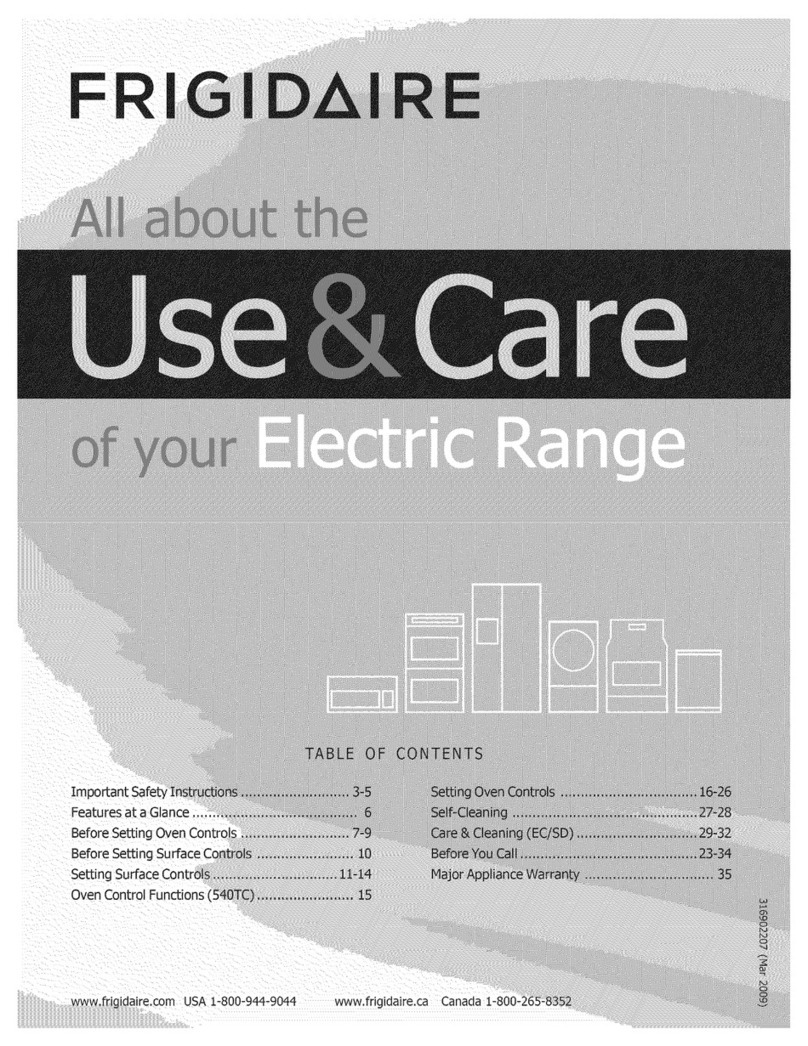
Frigidaire
Frigidaire BGEF3044KFA use & care
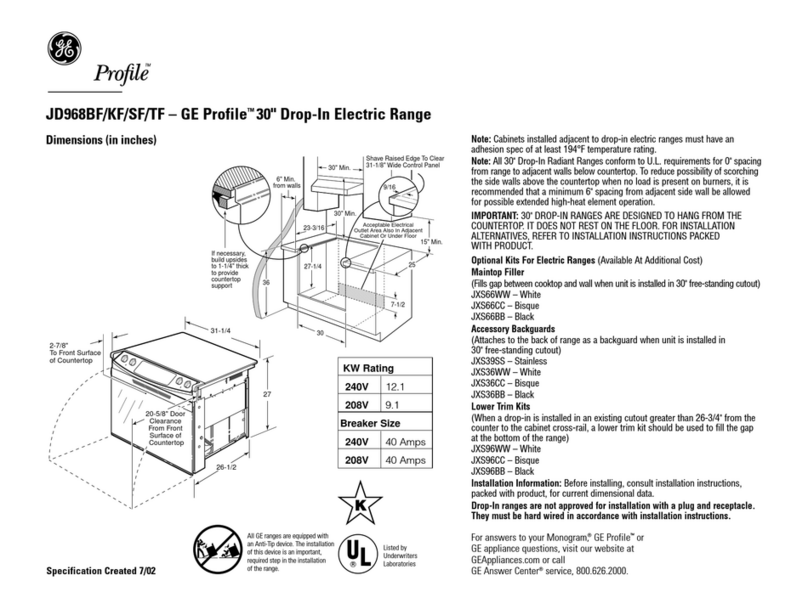
GE
GE Profile JD968KFCC Dimensions and installation information

Candy
Candy TRIO 9501 Instructions for use and installation
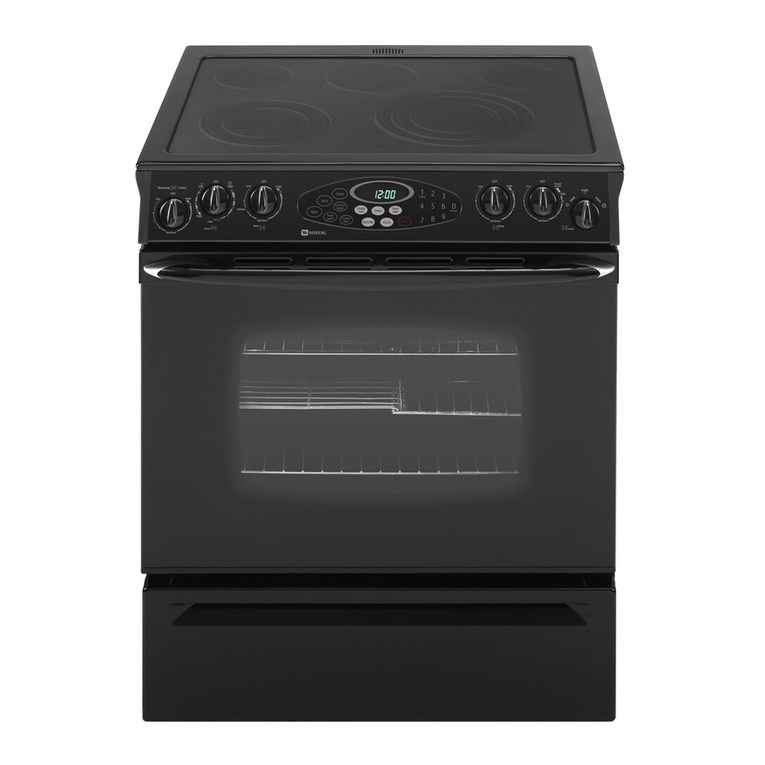
Maytag
Maytag MES5875BAB - 30" Slide-In Electric Range Use and care guide
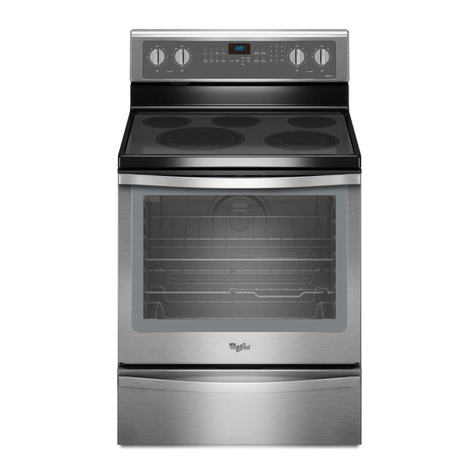
Whirlpool
Whirlpool WFE715H0ES User instructions
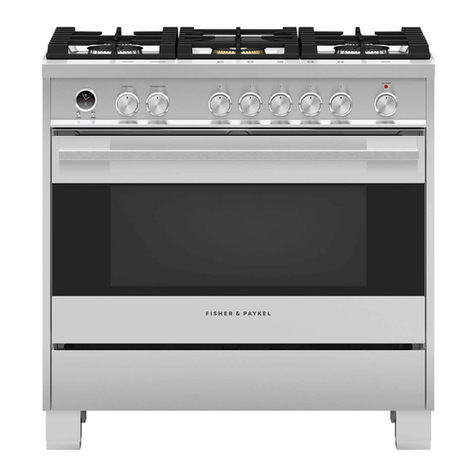
Fisher & Paykel
Fisher & Paykel OR36S Gas Gas installation guide
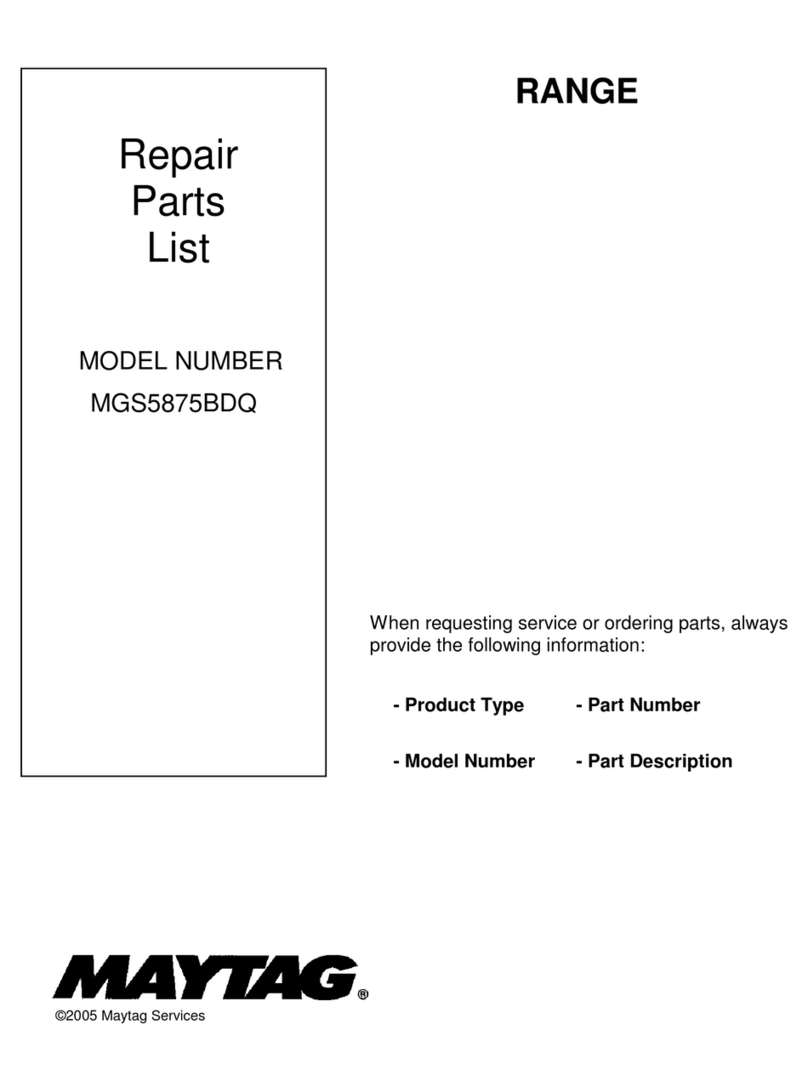
Maytag
Maytag MGS5875BDQ - Gas 4.5 cu. Ft. Slide-In Range Repair parts list
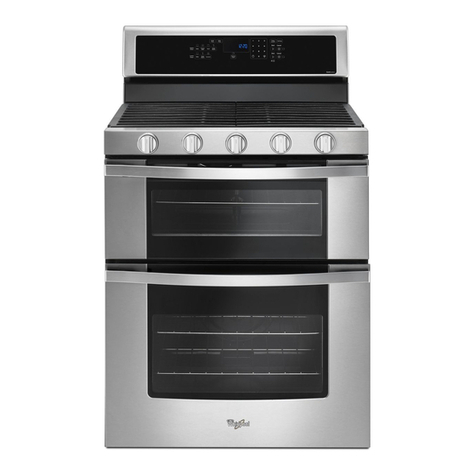
Whirlpool
Whirlpool WGG745S0FS installation instructions
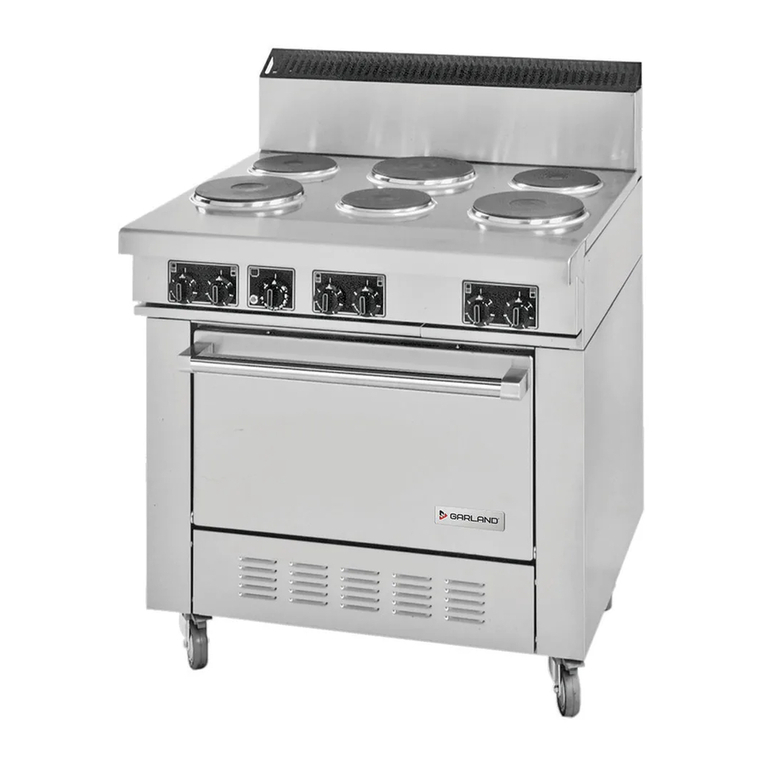
Garland
Garland S680 SERIES Installation, operating and service instructions
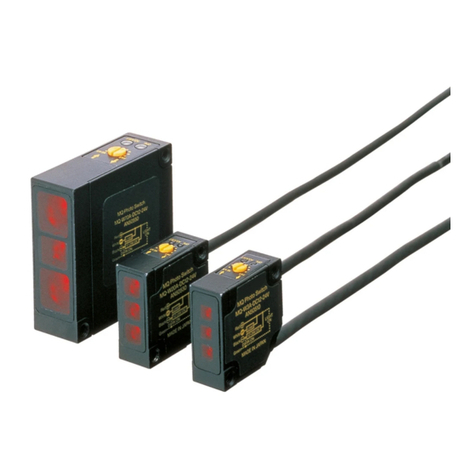
Panasonic
Panasonic MQ-W Series instruction manual

Thermador
Thermador PRD304GHC Use and care guide
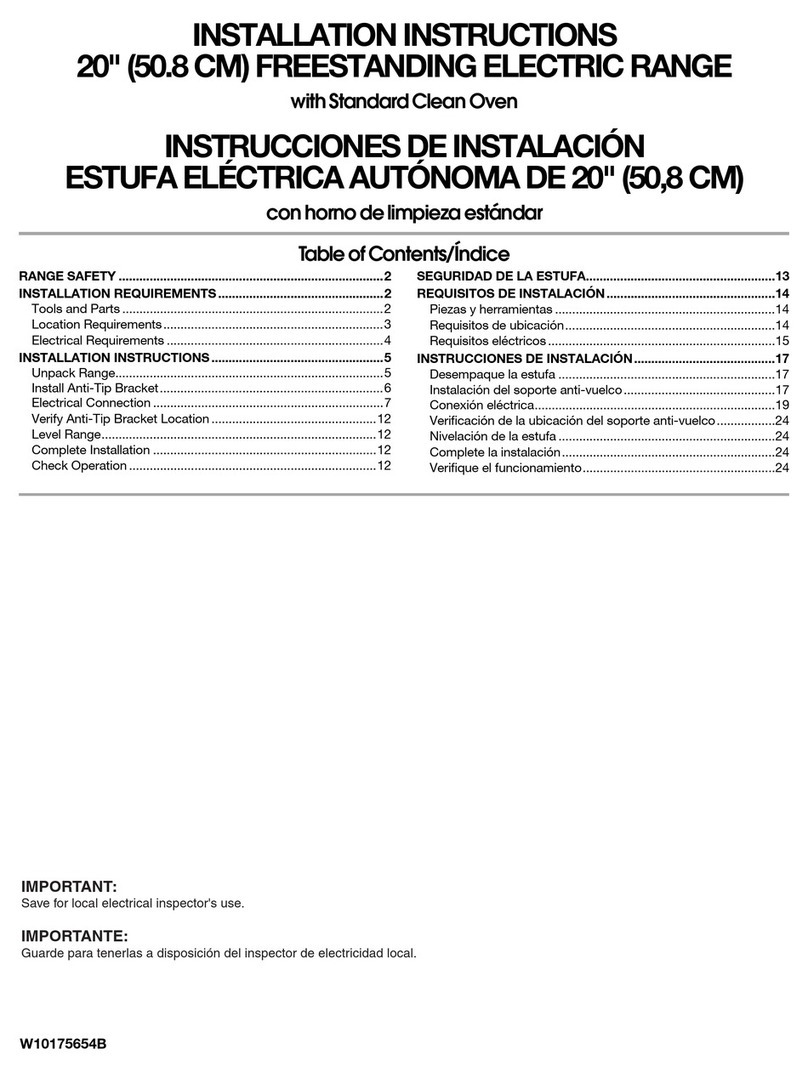
Amana
Amana AEP200VA installation instructions

